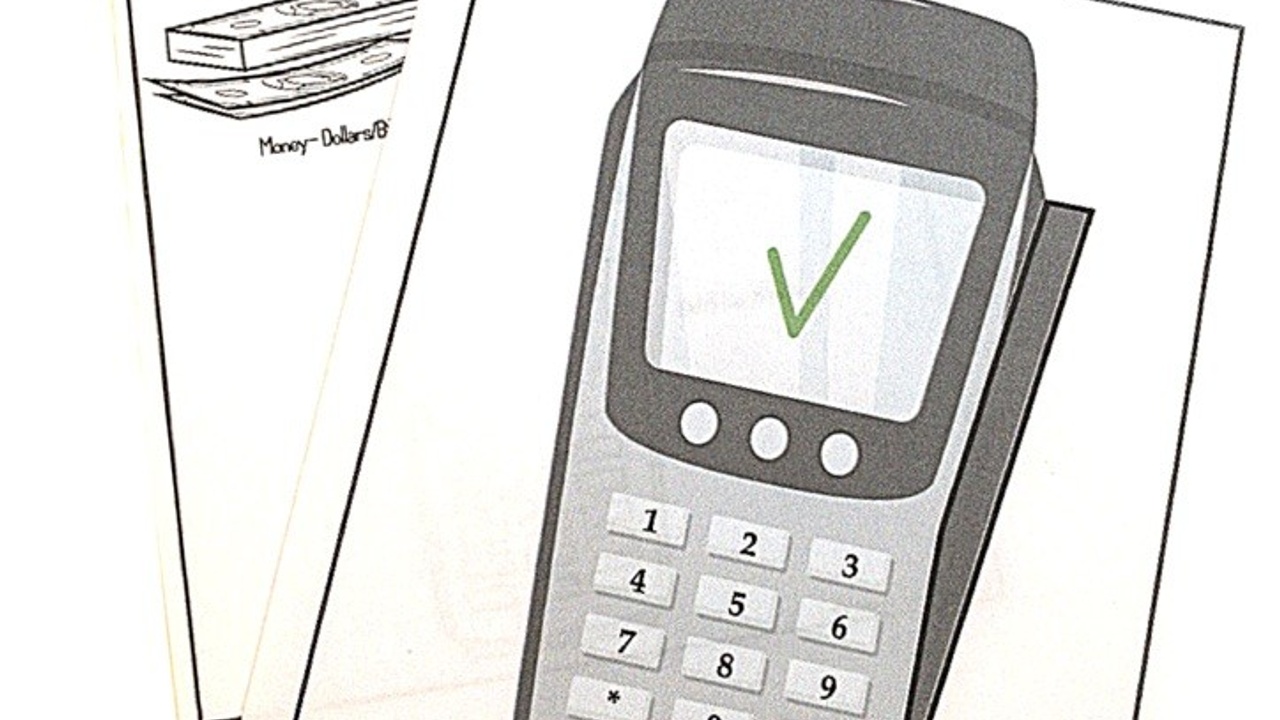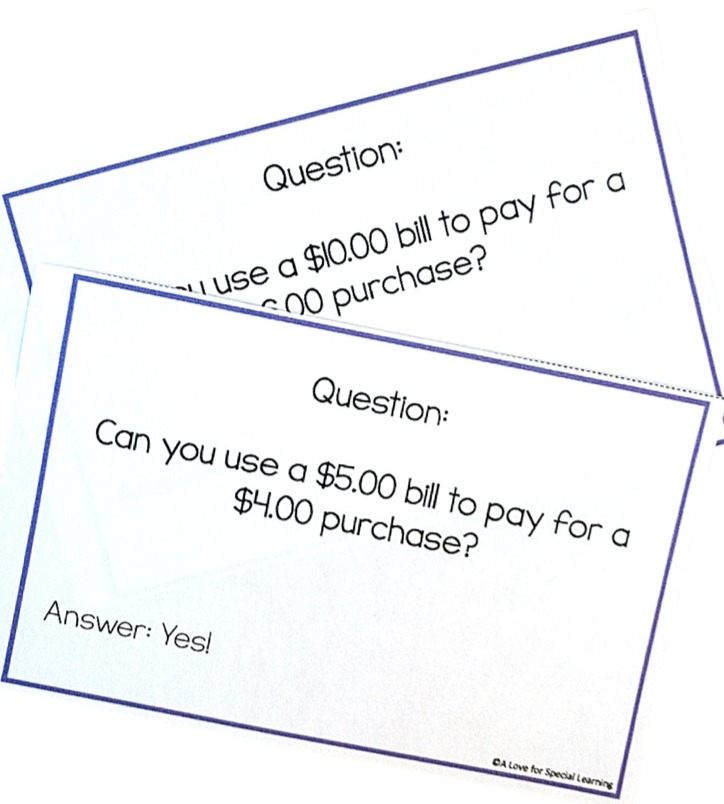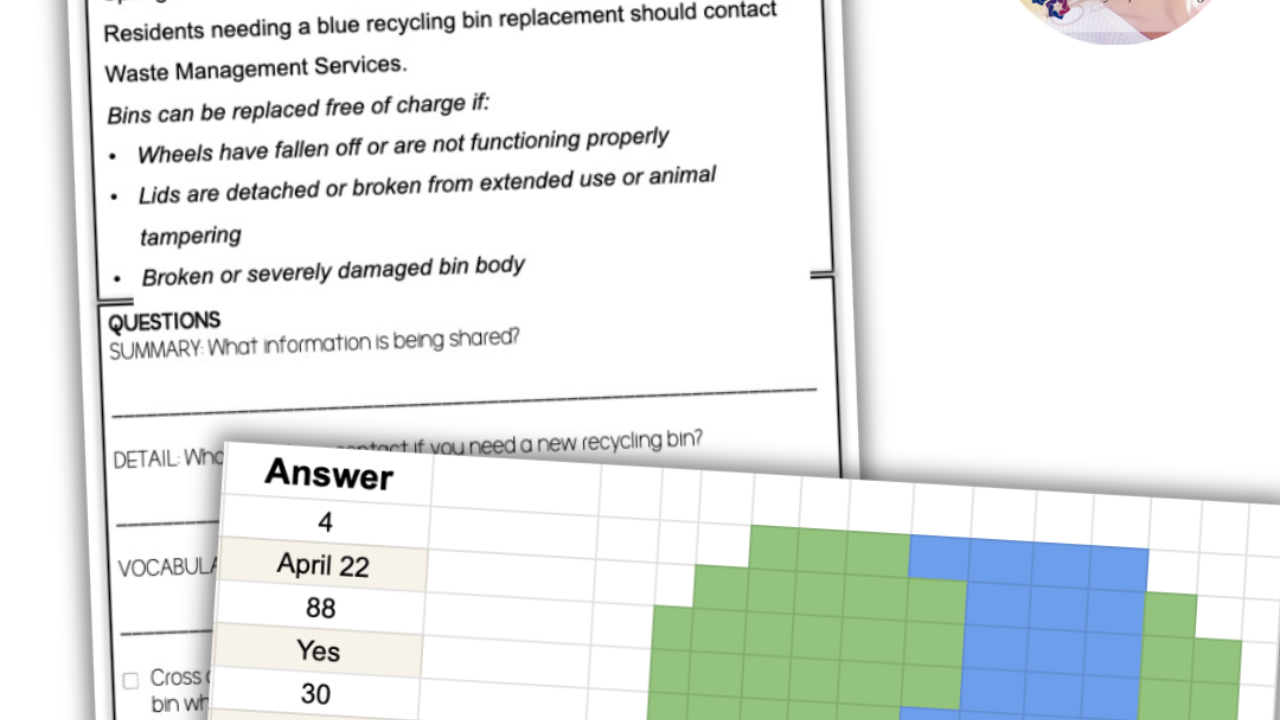How To Teach: Paying With Cash and Debit Card
Mar 14, 2022
Importance of Knowing How to Pay with Cash and a Debit Card
Many people make more purchases using a debit card than paying with cash, and very few pay with a check anymore. Therefore, learning how to pay the way stores and businesses accept payment is a must.
In fact, more stores and businesses are moving away from accepting cash (and I know many who don’t even use nickels or pennies, if they accept coins at all). So, gone are the days when knowing how to count exact change is a daily demand.
-Counting using Dollar Up/Dollar Over
-How to organize bills when paying with cash
-What a debit card is
-How to operate a debit card machine
-What buttons to press on a debit card machine
-Paying the ‘exact’ amount vs. paying ‘more than’
Why Focus On These Skills
The focus of money, nowadays, is plastic and bills. Therefore, knowing when and how to pay for purchases using both of those methods is key to making shopping accessible for students. Since some places are not accepting cash, students should know how to use both a debit card and cash to make a purchase.
When To Teach
Drop this lesson into any part of your teaching calendar. However, the key is to continue to reiterate and practice the skills in a variety of settings. Students should know how to enter a PIN number in an ATM AND at a debit card machine in a store. They should also know how to pay with a variety of bills.
I’ve created a complete lesson unit of materials for teaching this topic. The materials are comprehensive (5 full lessons) and most appropriate for life skill lessons at the middle school, high school and transition level students. Below are some lesson unit highlights!
Students will pay for a purchase using cash and the dollar up/over method.
Students will pay for a purchase using a debit card and debit card machine.
Lesson Vocabulary
Cashback, change, debit card, dollar over, insert, PIN, plus, remove, swipe, up
-
Pre and Post assessment
-
1 page narrative explaining the skill with and without visual text supports (to incorporate functional reading)
-
5 skill practice activities to learn and/or reinforce the focus skills
-
Game for students to practice their skills (because learning is fun)
-
Boom Cards for practice or assessment
-
Student learning reflection worksheet (thumbs up or down)
-
Encouraging on-topic quotes (use as a classroom poster or starter for each class period)
-
5 strategies for success (tips for being successful with the focus skills)
-
Coloring page with on-topic graphics
-
Skill mastery certificate for positive recognition and reinforcement
-
Data collection sheet on specific focus skills
-
Homework sheet to encourage students to practice the skill outside of the school setting
-
Word search of key vocabulary terms
-
Visuals for focus skills with age appropriate colors and graphics
Ultimate Goal
Giving your students options in terms of how they can pay for a purchase increases independence and empowers them to have control over their money and to make a choice, which are both important adult skills.
And if you teach transition and your students/young adults don’t have school-supervised student checking accounts and debit cards, consider advocating that they set one up!
Links to Curriculum


















